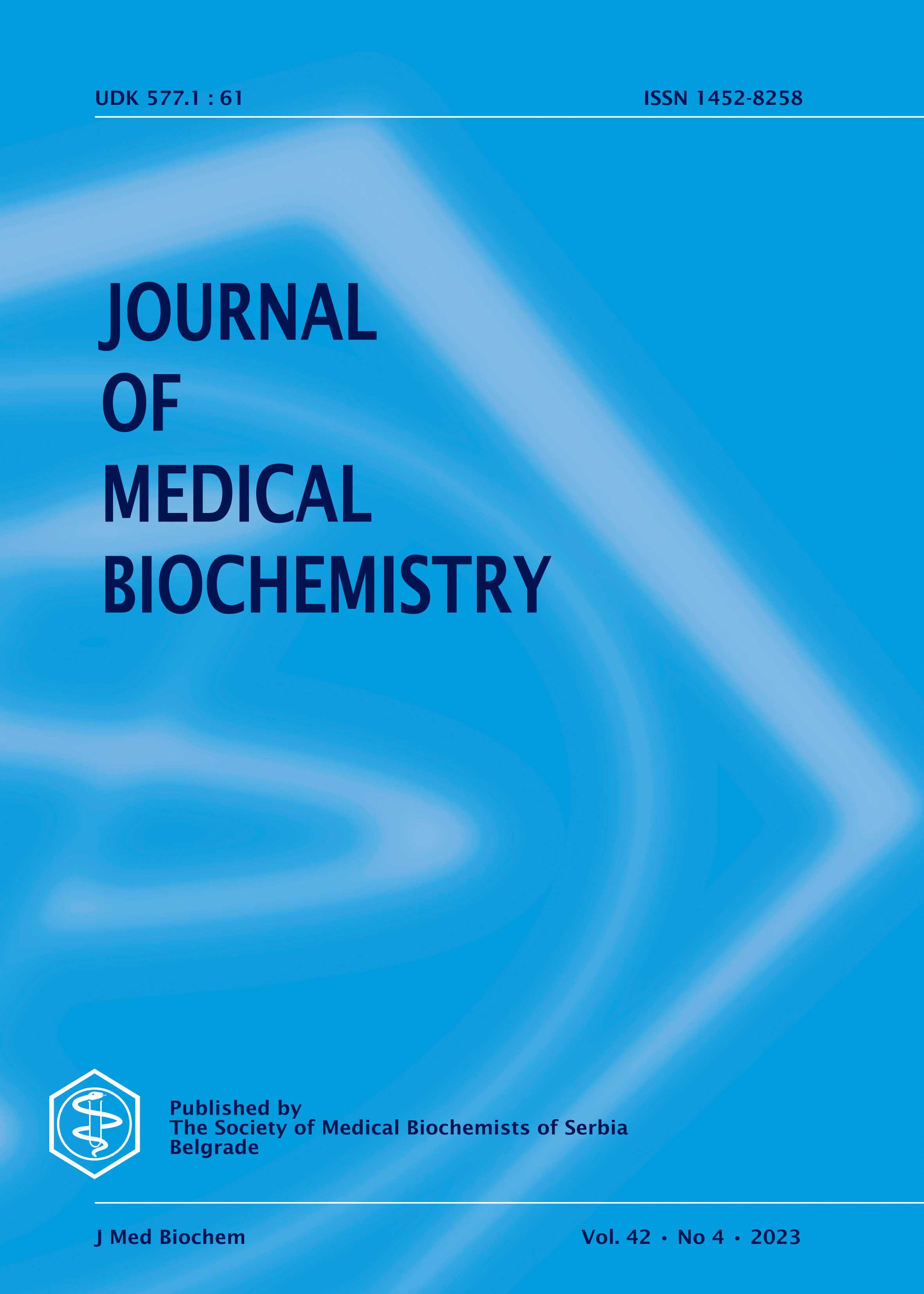Red blood cell distribution width (RDW) is a significant predictor of survival in laryngeal cancer patients: systematic literature review and meta-analysis
RDW in laryngeal cancer
Abstract
Background: This systematic literature review and meta-analysis investigated whether the red blood cell distribution (RDW) may predict survival outcomes in laryngeal cancer patients undergoing curative treatment.
Methods: We conducted an electronic search in Medline and Scopus using the keywords “red blood cell distribution width” OR “RDW” AND “laryngeal cancer” OR “larynx cancer” OR “laryngeal carcinoma” OR “larynx carcinoma,” without time or language restrictions (up to February 2022), for identifying studies investigating the prognostic value of RDW in patients with any form of laryngeal cancer and with a primary endpoint that was set as survival rate and/or disease-free survival between 1 and 10 years after curative treatment. The research was conducted according to the PRISMA (Preferred Reporting Items for Systematic Reviews and Meta-Analyses) 2020 reporting checklist.
Results: The digital search enabled us to identify five studies, that were finally included in our pooled analysis (survival rate and/or disease-free survival covered a window between 2.7-8.3 years). In four of the five studies, an enhanced RDW value in laryngeal cancer patients undergoing surgical or radiation treatment was associated with poorer survival (range of odds ratio [ORs], 2.28-10.44). In the pooled analysis, increased RDW conferred an over 3-fold higher risk of dying during follow-up after curative treatment for laryngeal cancer (OR, 3.37; 95%CI, 1.41-8.10).
Conclusion: RDW retains a clinically important prognostic value in patients with laryngeal cancer undergoing curative treatment. Clinicians could acknowledge this information for using a more aggressive therapy or setting narrower follow-up in laryngeal cancer patients with increased RDW values.
References
1. Mattiuzzi C, Lippi G. Cancer statistics: a comparison between World Health Organization (WHO) and Global Burden of Disease (GBD). Eur J Public Health 2020;30:1026-7.
2. Nocini R, Molteni G, Mattiuzzi C, Lippi G. Updates on larynx cancer epidemiology. Chin J Cancer Res 2020;32:18-25.
3. Divakar P, Davies L. Trends in Incidence and Mortality of Larynx Cancer in the US. JAMA Otolaryngol Head Neck Surg 2023;149:34-41.
4. Koroulakis A, Agarwal M. Laryngeal Cancer. [Updated 2022 Mar 15]. In: StatPearls [Internet]. Treasure Island (FL): StatPearls Publishing; 2022 Jan-. Available from: https://www.ncbi.nlm.nih.gov/books/NBK526076/.
5. American Society of Clinical Oncology. Laryngeal and Hypopharyngeal Cancer: Statistics. Available at: https://www.cancer.net/cancer-types/laryngeal-and-hypopharyngeal-cancer/statistics. Last accessed, February 20, 2023.
6. Lippi G, Plebani M. Integrated diagnostics: the future of laboratory medicine? Biochem Med (Zagreb) 2020;30:010501.
7. Bradford CR, Ferlito A, Devaney KO, Mäkitie AA, Rinaldo A. Prognostic factors in laryngeal squamous cell carcinoma. Laryngoscope Investig Otolaryngol 2020;5:74-81.
8. Salvagno GL, Sanchis-Gomar F, Picanza A, Lippi G. Red blood cell distribution width: A simple parameter with multiple clinical applications. Crit Rev Clin Lab Sci 2015;52:86-105.
9. Montagnana M, Danese E. Red cell distribution width and cancer. Ann Transl Med 2016;4):399.
10. Hu L, Li M, Ding Y, Pu L, Liu J, Xie J, et al. Prognostic value of RDW in cancers: a systematic review and meta-analysis. Oncotarget 2017;8:16027-16035.
11. Wang PF, Song SY, Guo H, Wang TJ, Liu N, Yan CX. Prognostic role of pretreatment red blood cell distribution width in patients with cancer: A meta-analysis of 49 studies. J Cancer 2019;10:4305-17.
12. Kara M, Uysal S, Altinişik U, Cevizci S, Güçlü O, Dereköy FS. The pre-treatment neutrophil-to-lymphocyte ratio, platelet-to-lymphocyte ratio, and red cell distribution width predict prognosis in patients with laryngeal carcinoma. Eur Arch Otorhinolaryngol 2017;274:535-42.
13. Bozkurt G, Korkut AY, Soytaş P, Dizdar SK, Erol ZN. The role of red cell distribution width in the locoregional recurrence of laryngeal cancer. Braz J Otorhinolaryngol 2019;85:357-64.
14. Hsueh CY, Lau HC, Li S, Tao L, Zhang M, Gong H, et al. Pretreatment Level of Red Cell Distribution Width as a Prognostic Indicator for Survival in a Large Cohort Study of Male Laryngeal Squamous Carcinoma. Front Oncol 2019;9:271.
15. Staniewska E, Tomasik B, Tarnawski R, Łaszczych M, Miszczyk M. The prognostic value of red cell distribution width (RDW), neutrophil-to-lymphocyte ratio (NLR), and platelet-to-lymphocyte ratio (PLR) in radiotherapy for oropharyngeal cancer. Rep Pract Oncol Radiother 2021;26:1010-1018.
16. Marcus K, Sullivan CB, Al-Qurayshi Z, Buchakjian MR. Can Red Blood Cell Distribution Width Predict Laryngectomy Complications or Survival Outcomes? Ann Otol Rhinol Laryngol 2022;131:1102-8.
17. Fu Y, Mao Y, Chen S, Yang A, Zhang Q. A Novel Inflammation- and Nutrition-Based Prognostic System for Patients with Laryngeal Squamous Cell Carcinoma: Combination of Red Blood Cell Distribution Width and Body Mass Index (COR-BMI). PLoS One 2016;11:e0163282.
18. Shen LF, Wang QY, Yu Q. The Systemic Immune-Inflammation Index and Albumin as Prognostic Predictors in Laryngeal Carcinoma. Nutr Cancer 2021;73:1916-23.
19. Lippi G, Mattiuzzi C, Cervellin G. Learning more and spending less with neglected laboratory parameters: the paradigmatic case of red blood cell distribution width. Acta Biomed 2016;87:323-8.
20. Lippi G, Plebani M. Red blood cell distribution width (RDW) and human pathology. One size fits all. Clin Chem Lab Med 2014;52:1247-9.
Copyright (c) 2023 Riccardo Nocini, Fabian Sanchis-Gomar, Giuseppe Lippi, Camilla Mattiuzzi

This work is licensed under a Creative Commons Attribution 4.0 International License.
The published articles will be distributed under the Creative Commons Attribution 4.0 International License (CC BY). It is allowed to copy and redistribute the material in any medium or format, and remix, transform, and build upon it for any purpose, even commercially, as long as appropriate credit is given to the original author(s), a link to the license is provided and it is indicated if changes were made. Users are required to provide full bibliographic description of the original publication (authors, article title, journal title, volume, issue, pages), as well as its DOI code. In electronic publishing, users are also required to link the content with both the original article published in Journal of Medical Biochemistry and the licence used.
Authors are able to enter into separate, additional contractual arrangements for the non-exclusive distribution of the journal's published version of the work (e.g., post it to an institutional repository or publish it in a book), with an acknowledgement of its initial publication in this journal.

